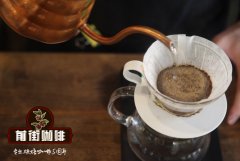What is the roasting degree of Guatemala Vivette South Fruit Coffee? Where did the name Guatemala come from?

Professional coffee knowledge exchange more coffee bean information please follow the coffee workshop (Wechat official account cafe_style)
"Guadi" is a nickname given to Guatemala by coffee lovers. The Mayan town sits on top of 37 volcanoes, two of which erupted in 2010. Coupled with frequent tornadoes and natural disasters everywhere, it is a veritable "dangerous place". However, fertile volcanic soil, undulating mountains and changeable microclimate are ideal conditions for growing coffee. As of 2011, Guatemala was the country with the highest coffee production in Central America.
Guatemala has been growing coffee since around 1850. Before World War I, the Germans controlled as much as 80% of the country's production, most of which was exported to Germany. ANACAFE, the official coffee farmers' association, divided the country into eight regions according to region and flavor in the 1990s, and registered trademarks to promote the origin. These include Antigua, Acatenango, Huehuetenango and Atitl á n, where many award-winning farms are located. Common beans in Guatemala today include Typica, Bourbon, Caturra, Catua í, Pacas, Maragogype, Pacamara (a hybrid of the first two), Pache Comum (a local variety of Typica), and Gesha.
Vivette Nanguo Highland, a place name with temperament, is located in the northwest of Guatemala. the soil of the highland is fertile and rainfall is abundant, and the cloud belt generated by the unique valley terrain of the high platform is the best coffee growing environment given by God. Therefore, Vivette South Fruit Highland is famous for producing high-quality coffee. Most of the winning beans in the Guatemalan coffee competition come from Vivette South Fruit Highland, which has a very good evaluation in the international community.
Shallow roasting City (fragrance): Vivetna fruit high mountain bean structure than Central American coffee, in the shallow roasted more delicate and changeable acidity, fresh and conspicuous mango pineapple fruit scented tea, meticulous and layered citric acid, jasmine tea aroma whirling in the upper jaw, when the coffee such as sliced lemon scented tea. The sour and sweet of the fruit are well balanced at this time, with slow and unirritating acid gushing out at the front of the tongue but then bringing out a series of sweetness.
Medium baking (general B): this baking degree has the best jasmine tea aroma and taste of Vivetna fruit and mountain beans, a little sweet and sour, sweet and sour, and the softness of sliding down the throat makes people feel comfortable and not Kaka. The acid of the orange seems to be lifted from the starting point to slowly render layer after layer behind, leaving the nose with the aroma of raisins is a good feeling. At this time, the coffee beans produced by Vivetta Nango are meticulous, elastic and vaguely full of mysterious characteristics.
Heavy roasting (general C): unlike the coffee produced in Antigua with a delicate smoky taste and a hint of cocoa chocolate powder, the sweet and smooth mouth of maltose has always been characteristic of Vivette Nanguo Coffee with a rich syrup taste and a hint of mint in the finish. This kind of baking degree round smooth mouth is the most acceptable to the public.
Important Notice :
前街咖啡 FrontStreet Coffee has moved to new addredd:
FrontStreet Coffee Address: 315,Donghua East Road,GuangZhou
Tel:020 38364473
- Prev

What is a coffee fair trade cooperative in Guatemala? What are the characteristics of Guatemalan coffee?
Professional coffee knowledge exchange more coffee bean information Please follow Coffee Workshop (Wechat official account cafe_style) in Guatemala, with extended mountains and great microclimate changes, in recent years, driven by national efforts, the development of the coffee industry has greatly improved and changed both in terms of quality and planting methods, making it a top international coffee supplier. Fair trade producers in Guatemala
- Next

What are the characteristics of Red Cherry Project Coffee? Is Ye Jia Xuefei the Red Cherry Project?
Professional coffee knowledge exchange more coffee bean information please follow the coffee workshop (Wechat official account cafe_style) what is the red cherry project? The Red Cherry Project (Operation Cherry Red Project) is a project aimed at improving the quality and value of raw beans of Ethiopian coffee. Since 2007, it has been launched by Dutch trader Trabocca and local farmers.
Related
- Detailed explanation of Jadeite planting Land in Panamanian Jadeite Manor introduction to the grading system of Jadeite competitive bidding, Red bid, Green bid and Rose Summer
- Story of Coffee planting in Brenka region of Costa Rica Stonehenge Manor anaerobic heavy honey treatment of flavor mouth
- What's on the barrel of Blue Mountain Coffee beans?
- Can American coffee also pull flowers? How to use hot American style to pull out a good-looking pattern?
- Can you make a cold extract with coffee beans? What is the right proportion for cold-extracted coffee formula?
- Indonesian PWN Gold Mandrine Coffee Origin Features Flavor How to Chong? Mandolin coffee is American.
- A brief introduction to the flavor characteristics of Brazilian yellow bourbon coffee beans
- What is the effect of different water quality on the flavor of cold-extracted coffee? What kind of water is best for brewing coffee?
- Why do you think of Rose Summer whenever you mention Panamanian coffee?
- Introduction to the characteristics of authentic blue mountain coffee bean producing areas? What is the CIB Coffee Authority in Jamaica?

